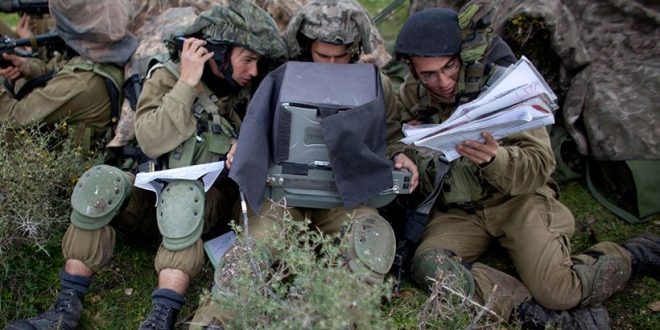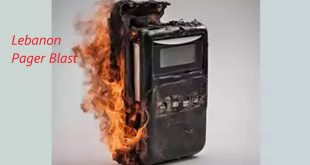Dive into the Israeli perspective on Gaza War as a Zionist reporter unveils the complexities and challenges within the ongoing Gaza war.
The fourth month of the war in Gaza has transformed into a grim situation for Israeli soldiers. The well-equipped army of the Zionist regime, known for its aggressive tactics and attempted entry into Gaza, has now become ensnared by the strategic methods employed by the resistance. Despite the extensive destruction caused by intense bombings and shelling in residential areas, resulting in a significant loss of infrastructure in the northern and central regions of Gaza, the Zionists have not achieved the progress they anticipated. As the conflict persists, the number of Israeli casualties continues to rise. Additionally, with the passage of time, fatigue sets in among the Zionists, leading them to distance themselves from support centers, consequently amplifying the scale of their destruction.
Despite the army of this regime persistently issuing deceptive statements and false information regarding casualties – claiming the death toll of 501 soldiers after twelve weeks of ground battle – some security and military journalists within the regime, who adopt a more realistic stance, express pessimism about the ongoing war. Their assessment is far from optimistic; in fact, they contend that the situation is not merely unfavorable but rather quite dire. The reluctance to acknowledge the truth and the actual nature of the war, including the true extent of casualties, has led to an increase in self-censorship. Consequently, the families of Zionist soldiers deployed to Gaza are left with limited knowledge about the fate of their loved ones. These journalists, armed with a more accurate understanding of the statistics, advocate for the withdrawal of the army from Gaza, recognizing the grim reality of the situation.
Amos Harel, a military analyst at the Hebrew-language Haaretz newspaper, known for his accurate battlefield reports in recent weeks, has expressed concerns. He stated that if the current trajectory of the war continues, there will likely be a surge in reports about the deaths of Israeli soldiers in Gaza, with the army facing an escalating number of casualties. As doubts grow over the military’s ability to achieve its objectives in Gaza, including the “annihilation” of Hamas and the return of detainees, the risk for the Zionist regime will intensify.
As per Harel’s analysis, the potential shift in the Israeli military operations in Gaza within the next month raises doubts about achieving the stated goals for ground operations in the Gaza Strip. Despite assertions from Prime Minister Benjamin Netanyahu and his cabinet that sustained military pressure is the key to inducing flexibility from Hamas, the current situation suggests a reluctance on the part of Hamas to make concessions. While specific details of ongoing negotiations between “Israel” and the United States regarding the time horizon of the war have not been disclosed, it is evident that the negotiations have set a deadline for the commencement of the next phase of the conflict.
This Zionist analyst suggested that the anticipated shift in Israel’s offensive operations in Gaza is expected to occur around mid-January. Following this shift, there is a projected decrease in the intensity of Israel’s military activities. The rising toll on the Zionist army during the conflict with Gaza has triggered growing uncertainties about the war’s efficacy, prompting internal assessments of support for the ongoing military campaign. The persistence of ground operations within the Gaza Strip is anticipated to be accompanied by a stream of unfavorable news, such as the reported deaths of additional officers and soldiers. A notable challenge for Israel’s maneuver in this operation is the lack of tangible achievements despite the continuation of ground activities; the army remains stationary, unable to effect any significant changes in the Gaza Strip’s situation.
He cited the statement of a military battalion commander that participated in the occupation of the al-Shuja’iyah neighborhood in the eastern part of Gaza City. The commander conveyed that despite the completion of the army’s occupation of the neighborhood, the soldiers sense being surrounded from all directions by the forces of the Qassam Battalions, the military arm of the Hamas movement, owing to their adept concealment abilities. The prolonged presence of infiltrators in a Gaza Strip area exposes them to the vigilance of Palestinian resistance forces. Even when the army commander believes that the engagement with a Hamas military battalion has concluded, these battalion forces unexpectedly persist in combat, catching the army off guard.
In the subsequent portion of the article, Harel, writing for this Hebrew newspaper, mentioned that the Israeli army is set to diminish its activities in the Gaza Strip this month as part of an agreement reached with Washington. The reduction in operations is anticipated in the coming month, coinciding with visits from high-ranking US officials to Tel Aviv. The most recent visit was made by US Defense Secretary Lloyd Austin, aiming to provide insights into the future course of the war. There are indications suggesting ongoing discussions between Tel Aviv and Washington regarding the scaling back of military operations, with an apparent agreement to commence the reduction from mid-January.
The Hebrew-language newspaper further speculated that while Netanyahu is well aware of the considerable pressure levers the United States holds against the Zionist regime, including military support and international backing, he is inclined to challenge the Americans to appease the right-wing blocs. Despite potential American requests to curtail ground operations, Netanyahu may resist in order to maintain favor with these domestic factions. Even if the Zionist army complies with American appeals to reduce offensive operations in the Gaza Strip, there remains a risk of becoming entirely ensnared in the “Gaza Swamp,” akin to the predicament faced in Lebanon after the occupation of Beirut in 1982.
According to this Hebrew language newspaper, a common characteristic between the current war against Gaza and the First Lebanon War in 1982 is the uncertainty surrounding the actual objectives of the war and the feasibility of achieving victory. If the occupying army shifts away from the current approach of ground operations to more limited military techniques, the likelihood of attaining the stated goals for this war—such as the “destruction” of Hamas and the return of Zionist prisoners—will further diminish.
There is widespread indecision among the Zionist authorities regarding the ongoing war. While Netanyahu’s push to prolong the war is met with acceptance across various Zionist circles, there is an overarching fear of the potential outcomes. Until now, the cost of the war has escalated to tens of billions of dollars, leading to the collapse of all economic structures within the regime.
 Arab24 اخر اخبار الوطن العربي
Arab24 اخر اخبار الوطن العربي




